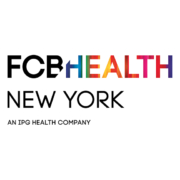Mastering rare disease launch excellence
Mastering rare disease launch excellence
By Natalie Harb, IQVIA
Medicines for rare diseases are a leading contributor to all novel drug approvals and launches. During the past five years, orphan medicines have typically represented more than half of new active substance approvals in the United States and, on average, 45 percent of approvals in Europe.1 Rare diseases represent a significant focus of innovations yet have a staggering impact on society. The total economic burden, which includes both medical and indirect costs, is $997 billion dollars in the U.S. alone.2 An estimated 95 percent of the more than 7,000 rare diseases still have no available treatments.3 This punctuates the significant unmet need and helps explain why about 44 percent of the clinical trial pipelines in the U.S. and Europe are focused on these orphan conditions.4
By 2028, about 20 percent of total prescription drug sales are expected to be in rare diseases, which highlights a substantial commercial opportunity.2 This opportunity is incentivized by global regulatory agencies including the Food and Drug Administration (FDA), European Medicines Agency (EMA) and the Asia Pacific Region (APAC).5 Some of the ways they work to encourage drug development for rare diseases include tax credits or reduced fees, fast-track reviews, research grants, and extended market exclusivity.5
Given the unmet need of patients, significant growth opportunities and knowledge that regulators are doing what they can to help, understanding the key factors for launch excellence is more important than ever.
An increasingly complex launch environment
In this post-COVID era, healthcare systems are severely stressed by patient backlogs, staff shortages and therapies becoming more technologically sophisticated. Budgets are tighter than ever, cost-containment measures are firmly in place and yet these health systems continue to be squeezed from both sides.6
Representatives are also facing challenges with fewer opportunities for one-on-one interactions with healthcare providers (HCPs), which once was the norm. With burnout and greater workloads, these engagements have greatly decreased in many countries. Remote visits of shorter duration have become more common.7
Despite these challenges, orphan drugs in the U.S. and Europe proved to be resilient due to a combination of factors, including:8
- High motivation to treat with a strong clinical story.
- Screening programs to pre-identify patients, even those who failed on prior treatments.
- Alternate sites of care to reduce the burden on healthcare systems.
The environment is poised to be even more challenging on both sides of the Atlantic due to key policy changes and proposals drafted in 2023.
Successfully facing launch challenges
Rare disease innovators must prepare early, effectively, and with great attention to partnerships with stakeholders. The stakes are high, and care pathways are even more complex and resource intensive. These three critical dimensions are instrumental to achieving launch excellence for rare diseases.
1. Engage stakeholders early.
Building great relationships across the health system is critically important from early-stage development through commercialization. With launch readiness, involving and engaging with key stakeholders early gains a deep understanding of patient and disease. This is crucial for therapeutic development and care pathway preparation.
Collaborating early on with patients and patient advocacy groups (PAGs) offers opportunities for a deeper understanding of the disease and the potential to include more patient-relevant endpoints and outcomes. This can include quality of life assessments and patient-reported outcomes as key metrics. PAGs can also help identify and recruit trial participants and aid in the development of patient-centered tools and advocacy for policy and reimbursement.
Medical affairs (MA) has a deep understanding of the health system, its stakeholder environment, and they provide highly valued scientific communication. Ensure medical-led engagement is ongoing from pre-launch to post-launch activities to help deliver an educational journey centered around compelling evidence.
2. Value proposition and evidence generation.
An evidence strategy should start early and incorporate a combination of clinical and real world evidence. Understanding the disease and its natural course enables the education of all stakeholders, including regulatory organizations and payers.
Commitments with these partners can help pave the way for successful approval and market access. Early discussions with regulatory bodies can help ensure alignments on trial design. The right value proposition and evidence strategy can satisfy the needs of these organizations and payers, as well as patients and HCPs.
3. Health system readiness must be considered.
Many health systems are unprepared to adopt rare disease treatment innovations, both financially and operationally. These treatments are likely to have a combination of challenges that disproportionately affect patients with rare diseases, such as complex care pathways and a high per-patient health system cost. To address these challenges, companies need to understand the patient journey in the context of each country’s healthcare system, which is why partnering with PAGs and key opinion leaders (KOLs) can be instrumental to finding innovative solutions.
Many rare diseases have genetic origins and affect young children. Companies that support early diagnosis by advocating for genetic screening of newborns can benefit.9 They can also support patients along their treatment journey by providing resources that can help them manage their disease, despite a stressed health system.
Many rare disease therapies are delivered by infusion, and infusion centers at local hospitals may already be at or beyond capacity. The manufacturers of Tepezza formed a network of 1,000 infusion centers outside the hospital to help meet this need without further widening the health system readiness gap (see side bar). Thinking out of the box is imperative to finding solutions, and strong early partnerships can help overcome these challenges and help shape the market rather than relying on an established ecosystem.
Rare disease launch excellence is within reach
Even with present challenges, significant unmet needs, a staggering economic burden and policy changes, it is possible to implement a successful rare disease drug launch. Pharma and biotech companies will benefit from partnering with key stakeholders, such as PAGs and KOLs, based on specific region and indication. Developing evidence strategies can help to satisfy the needs of regulators and payers while providing a strong value proposition to patients, providers and the healthcare system. In addition, maintaining an aligned and prepared organization with ongoing performance measurement and optimization is critical to ensure launch strategy and management are on track for success. Launching in rare disease requires flexibility and agility to adapt to different situations and out-of-the-box thinking to address the truly novel nature of these treatments. Being unafraid to break with convention and disrupt the standard of care are keys to launch excellence in the current environment.
|
The power of the pivot Horizon Therapeutics, which was subsequently acquired by Amgen, created a highly successful U.S. rare disease launch for Tepezza (teprotumumab-trbw), a first-ever treatment for thyroid eye disease. The 2020 launch coincided with the initial phase of the COVID-19 pandemic, when lockdowns dramatically challenged healthcare systems by forcing them to operate in emergency mode. Horizon responded to the challenge by raising awareness among patients through early direct-to-consumer (DTC) activities and digital engagement with HCPs. The company also created a network of 1,000 infusion centers to deliver the infusion-based Tepezza. Their rapid pivot to virtual and DTC engagement resulted in a strong launch despite the difficult circumstances. Their agile and innovative approach was a powerful driver of effective product adoption.8 |
References
- Data from the FDA and EMA.
- Yang, G. et al. “The national economic burden of rare disease in the United States in 2019.” Orphanet J Rare Dis [Internet]. 2022;17(1). Available: http://dx.doi.org/10.1186/s13023-022-02299-5. PMID: 35414039; PMCID: PMC9004040.
- Fermaglich, L.J., Miller, K.L. “A comprehensive study of the rare diseases and conditions targeted by orphan drug designations and approvals over the forty years of the Orphan Drug Act.” Orphanet J Rare Dis [Internet]. 2023;18(1). Available: http://dx.doi.org/10.1186/s13023-023-02790-7. PMID: 37353796; PMCID: PMC10290406.
- Aitken, B.M. “Global Trends in R&D 2024: Activity, productivity, and enablers.” Available: https://www.iqvia.com/insights/the-iqvia-institute/reports-and-publications/reports/global-trends-in-r-and-d-2024-activity-productivity-and-enablers.
- Lutzmayer, S., Scott, K., and Rickwood, S. (2024). “From orphan to opportunity: Mastering rare disease excellence.” Available: https://www.iqvia.com/-/media/iqvia/pdfs/library/white-papers/from-orphan-to-opportunity-mastering-rare-disease-launch-excellence.pdf.
- IQVIA Primary Research. (March 2023). Impact of COVID-19 on Healthcare System in EU4, UK & US.
- IQVIA EMEA Thought Leadership.
- IQVIA EMEA Thought Leadership. IQVIA secondary research: US orphan, but not orphan in Europe.
- Screen4care.eu. Available: https://www.screen4care.eu.
Natalie Harb is a vice president, offering development, global commercial solutions business, IQVIA.





![shutterstock_1848191236 [Converted] Customer engagement](https://www.pharmalive.com/wp-content/uploads/2023/12/Customer-engagement-180x180.jpg)



